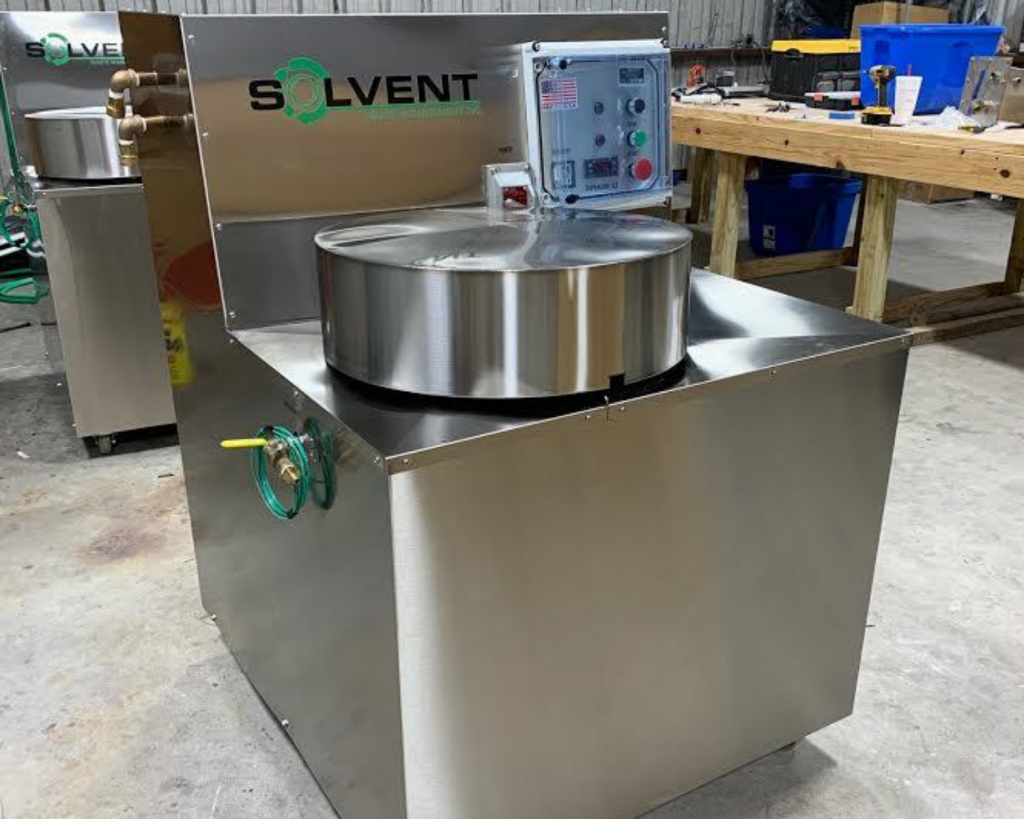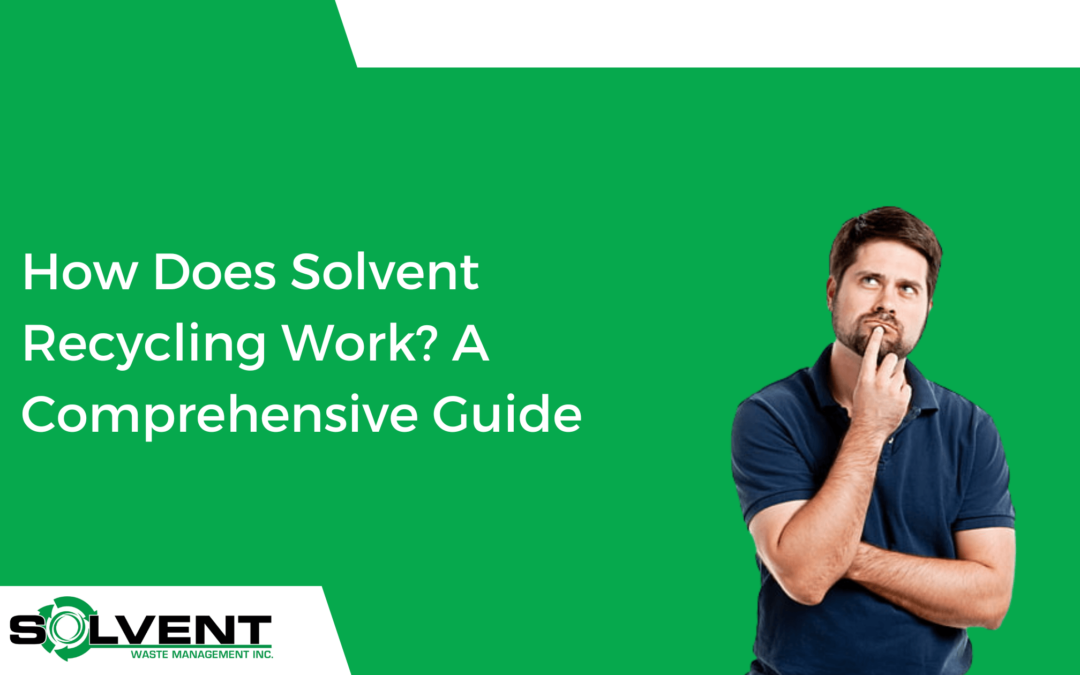As the global demand for sustainable solutions increases, industries are looking for effective ways to reduce their environmental impact and conserve resources. Solvent recycling is one such method that allows companies to recover and reuse solvents, minimizing waste and cutting costs. But How Does Solvent Recycling Work ?
In this blog, we will dive into the process of solvent recycling, the different technologies available, and the benefits this practice offers to businesses and the environment.
What is Solvent Recycling?
Solvent recycling is a process that involves the recovery and reuse of solvents that have been contaminated or used in various industrial applications. This method enables companies to reduce their reliance on new, virgin solvents and minimize the amount of hazardous waste generated.
The process typically involves separating the contaminants from the solvents, rendering them clean and suitable for reuse. There are several technologies available for solvent recycling, each with its advantages and limitations.
Understanding the Solvent Recycling Process
The solvent recycling process generally follows a series of steps:
- Collection and Storage: The first step in solvent recycling is collecting and storing used solvents from industrial processes. This may involve setting up a collection system to capture solvents from production lines or gathering them in drums or containers.
- Pre-treatment: Before the actual recycling process begins, the used solvents may require pre-treatment to remove any solid contaminants, such as dirt or debris. This can involve filtration, sedimentation, or centrifugation.
- Recycling Process: The core of solvent recycling involves using various technologies to separate the contaminants from the solvents. Some of the most common methods include distillation, adsorption, and membrane separation. Each technology has its advantages and is suitable for different types of solvents and contamination levels.
- Quality Control: After the solvents have been recycled, they undergo quality control tests to ensure they meet the required purity standards. This may involve analytical methods, such as gas chromatography or mass spectrometry, to verify the solvent’s composition and purity.
- Reuse: Once the recycled solvents pass quality control tests, they are ready for reuse in industrial processes. This reduces the need for new, virgin solvents and helps conserve resources and minimize waste.
Solvent Recycling Technologies
Distillation
Distillation is the most common method used for solvent recycling. This process involves heating the contaminated solvent mixture until the solvents evaporate, leaving behind the contaminants. The solvent vapors are then condensed back into a liquid form, free of impurities.
There are different types of distillation methods, such as simple distillation, fractional distillation, and vacuum distillation, each suitable for different solvent mixtures and contamination levels.
Advantages:
- Effective for a wide range of solvents and contaminants
- Can achieve high levels of solvent purity
- Scalable for various volumes of solvent
Limitations:
- Can be energy-intensive
- May not be suitable for solvents with very similar boiling points
Adsorption
Adsorption is another solvent recycling technology that involves using an adsorbent material, such as activated carbon or zeolites, to separate contaminants from solvents. The used solvents are passed through a bed of the adsorbent, which selectively binds to the contaminants, allowing the clean solvents to pass through. The adsorbent material can then be regenerated for reuse, typically through thermal or chemical processes.
Advantages:
- Suitable for solvents with low boiling points or those that are heat-sensitive
- Can be used in continuous processes
- Low energy consumption compared to distillation
Limitations:
- Limited adsorbent capacity, requiring regular regeneration
- May not be suitable for all types of solvents and contaminants
Membrane Separation
Membrane separation is a solvent recycling method that utilizes semi-permeable membranes to separate contaminants from solvents. The used solvents are passed through a membrane that selectively allows the solvents to pass while retaining the contaminants. Some common membrane separation methods include ultrafiltration, nanofiltration, and pervaporation.
Advantages:
- Effective for solvents with similar boiling points or those that are heat-sensitive
- Can be used in continuous processes
- Low energy consumption compared to distillation
Limitations:
- Membrane fouling and degradation can occur over time, requiring replacement
- May not be suitable for all types of solvents and contaminants
Benefits of Solvent Recycling
- Cost Savings: By recycling solvents, companies can reduce their reliance on new, virgin solvents, which can lead to significant cost savings. Additionally, recycling solvents can minimize waste disposal costs, as less hazardous waste is generated.
- Environmental Benefits: Solvent recycling reduces the demand for new solvents, conserving resources and reducing the energy required for solvent production. Moreover, recycling solvents helps minimize the amount of hazardous waste generated, decreasing the risk of pollution and harm to the environment.
- Regulatory Compliance: Many governments around the world have implemented strict environmental regulations, requiring companies to reduce their waste and emissions. Solvent recycling can help companies comply with these regulations, avoiding penalties and maintaining their reputations.
- Enhanced Corporate Social Responsibility (CSR): Implementing solvent recycling can strengthen a company’s CSR initiatives by showcasing its commitment to sustainability and environmental stewardship. This can help improve a company’s reputation and brand image, making it more attractive to eco-conscious consumers, investors, and partners.
- Increased Operational Efficiency: Solvent recycling can help companies optimize their processes by reducing waste, streamlining operations, and conserving resources. This can lead to increased efficiency and productivity, ultimately benefiting the company’s bottom line.
In conclusion, solvent recycling is an effective and sustainable solution for companies looking to reduce their environmental impact and conserve resources. By understanding how solvent recycling works and selecting the appropriate technology, businesses can reap the benefits of cost savings, regulatory compliance, and enhanced CSR, while also contributing to global sustainability efforts.
About Solvent Waste Management
Since 1994, Solvent Waste Management, Inc. has assisted many companies in a variety of different industries not only improving their operations but also reducing costs.
Solvent Waste Management Inc. designs and manufactures solvent distillation equipment that cleans contaminated solvents, allowing users to restore and continuously reuse solvents – thereby saving money on the cost of disposal and the cost of new solvents.

Model SW8 Solvent Recovery System
Model SW30 Solvent Cleaning Machine
Model SW55 Solvent Recycler Machine
Model SW70 Solvent Recovery Equipment
Solvent Waste Management designs and manufactures solvent recycling equipment that cleans contaminated solvents in such a way that the customer can reclaim and reuse solvents again and again, thus saving on both the cost of solvent disposal and the cost of new materials.

